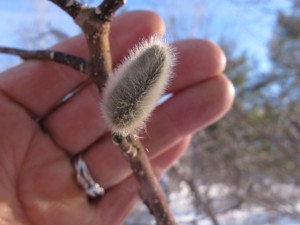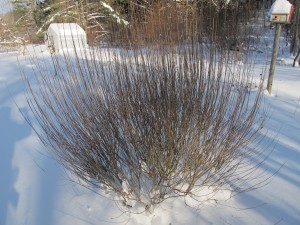Enjoying the Winter Landscape
I like winter. I like the special quality of winter light in the late afternoon, those purples and blues that were perfectly captured by artist Maxfield Parish. But most of all, I like passing through the woods on skis when the sun is bright. The snow sparkles the way diamonds might, if scattered on a Mediterranean beach.
I visit the woods in winter for the same reason that I go to museums: for the sheer beauty on display. There is something uplifting about great works of art – or great works of nature. I don’t need to go to the Grand Canyon to feel awe; I can enjoy the woods near home just as much. Part of the joy for me is going slowly enough to see what’s there, and taking time to appreciate the details.
As I approach my favorite woods, stolid maples wait patiently along the lane, old and venerable. They will share their sweet nectar in another month or two but for now they stand silently, motionless, waiting.
In the forest, young hemlocks bend under the weight of snow, their long arms reaching to the ground for stability, green fingers disappearing into the snow. Going through glades of mature hemlocks or pines, their branches reaching out high above me, is almost like visiting a great cathedral. I like the wisps of snow that blow off their branches – snow smoke I call it – even if some goes down my neck.
Teenage beeches are the glamour stars of the woods, their bark smooth, gray and unblemished. Young beeches often hold their dry brown leaves until May, and they rustle when I jostle them. But the old beeches seem somber, even sad, and somehow remind me of elephants. They are stolid, unmoving, their grey legs showing wrinkles and scars.
I don’t always have time or the energy to go for a long cross-country skiing adventure. Sometimes I just strap on my snowshoes and go to my garden to look at the silhouettes of trees and shrubs.
One of my favorites is my Merrill magnolia. I planted it some 15 or 20 years ago as a specimen tree in the middle of a mowed lawn. Now it is near maturity: 25 or 30 feet tall with a “wing span” of 20 feet. It has multiple stems, as many magnolia do, and smooth gray bark. The branches are loaded with large, fuzzy flower buds. These buds are bigger and better than pussy willow blossoms, and they bring joy not only for their looks now, but also for the image of what the blossoms will look like: 3-inch double white flowers that are lightly fragrant. The tree almost always blooms for me on April 23, my birthday.
I love the curlicue form of purple-leafed, twisted hazelnut (also called Harry Lauder’s walking stick). It is a very interesting silhouette against the snow, and come spring it will produce lovely, glossy purplish leaves. Later in the summer the leaves will lose some of their purple hue and appear more green.
My apple trees can be a joy to look at, too. Proper pruning of apple trees can turn them into works of art. The key is to get rid of the clutter that apple trees seem determined to grow. Annual pruning to get rid of those vertical twigs called “water sprouts” makes a big difference. I tell people that a bird should be able to fly through an apple tree and not get hurt. I once found the skeleton of a bird in an unpruned apple tree, but don’t know for sure how it met its demise. I’ll start pruning in March, once the snow has melted enough to move around the trees easily.
A native tree that has a great profile is the pagoda dogwood (Cornus alternifolia). It grows branches well separated, so they remind me of person doing Tai chi, holding arms in frozen poses. I have one that grew out of the face of a retaining wall as a ‘volunteer’. Although I snipped it off when young, the roots sent a new shoot, and I let it grow. Now it is a favorite of mine in winter.
My arctic blue willow looks great now, too. It is a ‘nana’ or small variety, and has hundreds of thin twigs growing vertically and very close together. Earlier in the winter it was severely bent over by an ice storm, but I shook the branches free of ice and snow, and now it is back in fine form. The 16 inches of fine snow we got recently sifted through the branches this time, giving it a great silhouette.
So go outside and really look at the “bones” of your garden on a snowy day. And if you don’t find much to look at, make plans to buy and plant some nice trees and shrubs, come spring.
Correction: A kindly soils professor e-mailed me about a recent article in which I said wood ashes could be used to substitute for limestone. He noted that trees can pick up lead and cadmium, particularly near roads, so wood ashes are not good to use in the garden. He also said they act so quickly that your soil may become too alkaline and inhospitable to soil microorganisms.
Henry Homeyer teaches pruning and general gardening. His web site is www.Gardening-Guy.com. He is the author of 4 gardening books.





